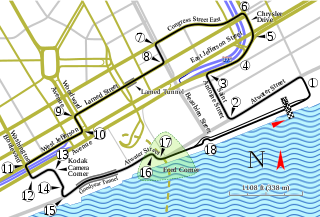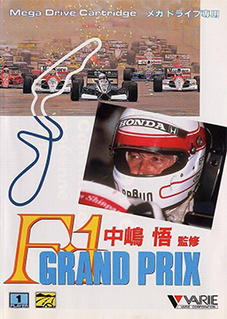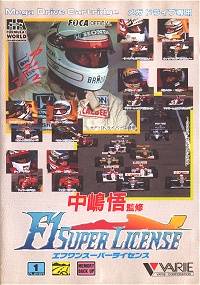
In motorsports, a pit stop is where a racing vehicle stops in the pits during a race for refuelling, new tyres, repairs, mechanical adjustments, a driver change, as a penalty, or any combination of the above. Not all of these are allowed in all forms of racing. While the term is still used in motorsports, it also gained popularity with driving in general when embarking on long road trips, suggesting a brief break from driving, as well as a refuelling stop. These "pit stops" grant the travelers a bathroom break, a breakfast/lunch/dinner break, or a chance to take in the local scenery.

The Grand Prix of Long Beach is an IndyCar Series race held on a street circuit in Long Beach, California. Christopher Pook is the founder of the event. It was the premier race on the CART/Champ Car calendar from 1996 to 2008, and the 2008 race was the final Champ Car series race prior to the formal unification and end of the open-wheel "split" between CART and IRL. Since 2009, the race has been part of the unified IndyCar Series. The race is typically held in April. It is one of the longest continuously-running events in Indy car racing and is considered one of the most prestigious events on the circuit.

The 1990 Brazilian Grand Prix was a Formula One motor race held at Interlagos, São Paulo on 25 March 1990. It was the second race of the 1990 Formula One World Championship. It was also the first Brazilian Grand Prix to be held at Interlagos since 1980, following the renovation and shortening of the circuit and the ascendancy of São Paulo driver Ayrton Senna.

The 1981 FIA Formula One World Championship was the 35th season of FIA Formula One motor racing. It featured the 1981 Formula One World Championship for Drivers and the 1981 Formula One World Championship for Constructors, which were contested concurrently over a fifteen-race series that commenced on 15 March and ended on 17 October. Formula One cars also contested the 1981 South African Grand Prix, although this was technically a Formula Libre race and was not part of the Formula One World Championship.
The 1978 Formula One season was the 32nd season of FIA Formula One motor racing. It featured the 1978 World Championship of F1 Drivers and the International Cup for F1 Constructors, contested concurrently over a sixteen race series which commenced on 15 January and ended on 8 October. The season also included the non-championship BRDC International Trophy.

The streets of Detroit, in the U.S. state of Michigan hosted Formula One racing, and later CART racing, between the 1982 and 1991 seasons. The street circuit (course) was set up near the Renaissance Center and the Cobo Arena, also including a small part of the M-1 highway, also known as Woodward Avenue. It is a flat circuit, with elevation ranging from 176 to 184 metres above sea level.

F-1 Dream is an automobile racing arcade game released by Capcom in 1988. Like many other Capcom arcade games at the time, it was released in the US by Romstar. It also had a PC Engine port released exclusively in Japan on August 25, 1989.

IndyCar Racing is a racing video game by Papyrus Design Group released in 1993. Papyrus, consisting of David Kaemmer and Omar Khudari, previously developed Indianapolis 500: The Simulation, released in 1989.

Al Unser Jr.'s Turbo Racing is a racing video game for the Nintendo Entertainment System console released in 1990. It is an adaption of the 1989 Japanese-market Famicom game World Grand Prix - Pole to Finish, with the most notable changes being the addition of Unser as an in-game coach, the number of laps, sound and interface design. This game features a season mode and two time trial modes. In season mode the player uses either Al Unser Jr. or make their own driver.

Kazuki Nakajima is a professional racing driver who drove in Formula One for the Williams-Toyota team from 2007 to 2009. Racing for Toyota Gazoo Racing since 2016, he won the 2018 and 2019 24 Hours of Le Mans, and is 2018-19 World Endurance champion along with team-mates Fernando Alonso and Sébastien Buemi. He is the second FIA world champion from Japan after Toshi Arai.

Formula One: Built to Win is a 1990 racing video game for the Nintendo Entertainment System developed by Winky Soft and published by SETA Corporation.

Not to be confused with the similarly titled Grand Prix Challenge.

F1 Hero MD is a Formula One video game endorsed by Satoru Nakajima that was released in 1992 for the Mega Drive/Genesis. The North American and European versions of the Mega Drive/Genesis game are known as Ferrari Grand Prix Challenge in honor of the Ferrari brand of racing vehicles.

Fastest 1 (ファステスト・ワン) is a Sega Mega Drive racing game video game released in 1991 exclusively in Japan. During the release of this video game, other Formula One video games like Super Monaco GP had caused a general increase of demand for Formula One video games. While most of those games were poor simulations of the races, Fastest One proved to be the most realistic of the era.

F1 Grand Prix: Nakajima Satoru is a 1991 Sega Mega Drive Formula One video game based on the career of Satoru Nakajima. Nakajima was the first full-time Japanese racer in the history of Formula One. In fact, this was the first game that Nakajima endorsed for a Japanese video gaming system. The entire 1991 Formula One season can be re-enacted with any of the notable contenders from the prestigious Formula One racing organization.

Nakajima Satoru Kanshū F1 Super License is a 1992 racing video game for the Sega Mega Drive that allows for either single season or exhibition modes of play. The object of the game is to acquire the championship for the 1992 Formula One season. There is an official FOCA license and uses a top-down view.
The following is a glossary of terminology used in motorsport, along with explanations of their meanings.

Formula One is a Formula One racing management videogame published in 1985 by CRL Group PLC, developed by G.B. Munday and B.P. Wheelhouse for the ZX Spectrum, and converted to Amstrad CPC by Richard Taylor.

F-1 Sensation, released in Europe as Formula 1 Sensation, is a 1993 racing video game by Konami for the Family Computer, and a Formula One licensed product. It is heavily based on their 1988 MSX2+ title, F-1 Spirit 3D Special. It was Konami's final original Famicom game before re-releases.

The 2014 Verizon IndyCar Series was the 19th season of the IndyCar Series and the 103rd season of American open wheel racing. Its premier event was the 98th Indianapolis 500, held on Sunday, May 25. Scott Dixon entered the season as the defending IndyCar Champion, while Chevrolet entered as the reigning Manufacturers' champion.


















